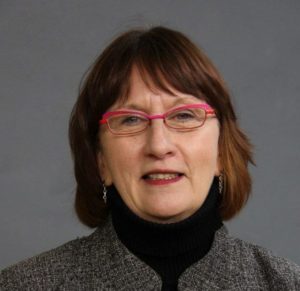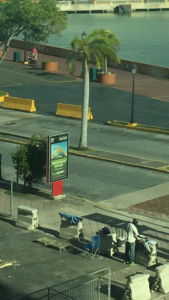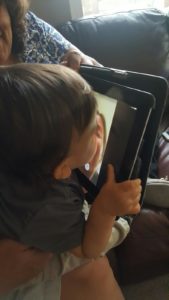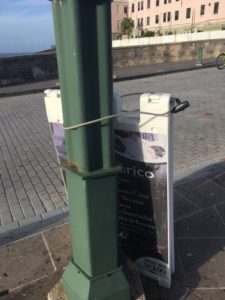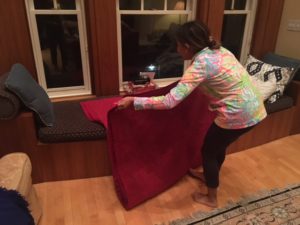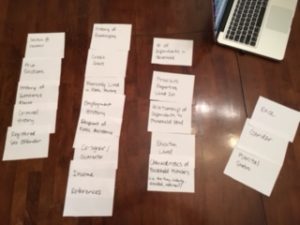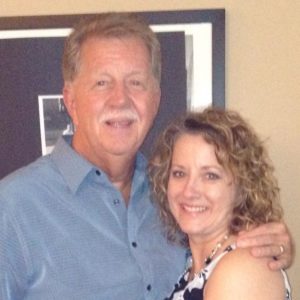Idea 1: Classes and materials with journey maps describing two different paths: one that leads to the cycle of incarceration-release-reincarceration, and one that leads to a just and clean life. Also, teaching the importance of goal setting
Entice: Many individuals do not realize the long-term consequences of spending even a short period behind bars. If they are taught about the struggles of find housing or employment post-incarceration, they may be more inclined to stay on the straight and narrow and avoid illegal activities. These classes and materials would be available to both ex-convicts and at-risk individuals, with the goal of helping ex-convicts break free from the cycle, and helping at-risk individuals avoid incarceration. The classes can be taught (or materials distributed) at local public schools, prisons, or non-profits like the Boys and Girls Club. To entice people to take the class, we can offer rewards such as a certificate of completion or a recommendation letter. Most of the target audience should be naturally enticed to the class after seeing the negative effects of drugs and incarceration in their neighborhoods or even within their friends and families.
Enter: When starting a class, the journey maps would be one of the first lessons taught, and it would remain as a guiding document for the remainder of the course. The different steps of the right path vs. the bad path must be consistently emphasized, as just one mistake could be enough to ruin a person’s life for the foreseeable future. However, the journey maps cannot be taught in a condescending or patronizing manner. Thus, Imani Unidad can hire successfully reformed ex-convicts to teach the classes and give talks. The students would be more likely to listen to someone who was or is in a similar situation to them (compared to a normal authority figure). Classes should be interactive as well as reflective, and they can contain a mix of at-risk individuals and ex-convicts so that both groups can learn from one another.
Engage: Goal setting will be a constant focus throughout the bulk of the class. Many of the successful users interviewed/spoken with stated that one of the biggest reasons of their success in reforming and gaining employment/housing after incarceration was the repeated following of goals. As one goal is accomplished, a new one shall be set with the help of their support system (family, mentor, teacher, Imani Unidad), and small goals will build up to larger ones.
Exit: At the end of the class, Imani Unidad would provide the students with a certificate of completion and a letter of recommendation regarding their character and the changes they are trying to make in their lives (if student is an ex-convict). This could be useful in future housing or job applications. Students will also be given a copy of the journey maps that they can keep at their homes to constantly remind them of the correct path, and how easy it is to diverge into the bad path.
Extend: After the class, successful students would be invited back for Imani Unidad alumni events, and some may even be invited to mentor other clients or teach classes themselves. The hope is that most if not all of the students will stick to the good path journey map and strive for their goals daily.
Idea 2: Social media website for landlords and formerly incarcerated individuals
Entice: A major problem with the afflicted individuals in Imani Unidad is that they are not only diseased by AIDS but also have the title of Ex-convict. This title is what creates the vicious cycle that Imani Unidad looks to prevent; as these individuals leave prison, a crucial factor for them to become productive members of society is to find work and/or a stable housing situation. Thus, a social media page driven to present profiles of ex-convicts in a positive light (like a facebook) that showcases their strengths (like linkedIn) could mitigate the hardship of finding work that would take on people with similar paths. This would call the interest to not only the specific individuals, but to possible employers.
Enter: What would first need to be done would be to gain exposure so that possible users may become the early adopters of the product. This would call upon us to seek out organizations like Imani Unidad and present the product to them and the opportunities for it. We could also gain exposure through advertising (on other social media pages, TV, or even radio) so that there could be a faster and more durable incubation period of use. This is when the user would create a profile and, with the help of more users, create a network of similar individuals. One would create a profile with important information (such as crime- subject to private usage with employer only) that would not only showcase the individual’s experience, but the drive and willingness to succeed.
Engage: With this, we would need to engage the individuals of which we seek to help so that the social media product can pick up steam and slowly become a viable source for insight on individuals seeking to turn around their lives. When the users become engaged, employers and real estate agents would have to eventually look to it before immediately turning down someone. Employers and property owners could contact the individual directly (like Facebook and linkedIn) when interested. If the individual is solely looking for work, this can be updated in the settings of the page so that real estate agents aren’t looking for uninterested users. This would not only benefit the individual, but the local economy.
Exit: After a successful creation of the product and a full base of adoption from an array of individuals across the nation (maybe even the world), the user might fall in line with an appropriate profession and/or housing given the level of experience, skillset, and drive. This would hopefully lead the individuals in achieving one of these things, if not both, and thus the user’s profile would be updated. A news feed (like in all social media apps) could be utilized to offer advertisements to individuals looking for housing and job but at the same time be used to highlight success stories of people using the app (obtaining meaningful work, changing life, etc.)
Extend: After the main use is fulfilled (individual’s life changed), the hope would be that the vicious cycle of drug use and crime would be eradicated. This in hope would change the perspective of at-risk populations so that the bigger picture is affected towards a more positive light. Success stories continue to build so much so that employers and property managers have no choice but to see every individual and assess them fairly and not have their past life affect a future of which they are trying to hard to change.
Idea 3: Tracking device that allows Imani Unidad to check in with at-risk individuals
Entice: Individuals don’t want to fall down a destructive path that lands them behind bars. Unfortunately, they are just trying to fit in and end up associating with groups that are engaging in illegal behaviors and activities. They lack the support system at home and at school to keep them from hanging out with the wrong crowd. A tracking device on their phone would alert mentors at Imani Unidad that they are outside of their house at odd hours of the night for an extended period of time. This would allow mentors to call them when they receive the alert to check in with them and to offer them guidance in getting out of a possibly bad or dangerous situation. So they would be enticed by the fact that they don’t currently have anyone to be accountable to. They would be further enticed by seeing their friends and family members end up behind bars.
Enter: They might be hesitant at first to agree to use the tracking device because they might feel like they are under constant surveillance. When their mentor calls them after an alert has gone off they will ignore the call. They will still be very much focused on the mindset of belonging to a group. At this point the societal pressure of belonging will outweigh the long-term costs of associating with the wrong crowd and ending up in jail or prison. The mentor at this point would put a lot of effort into establishing a relationship with the individual and building trust with him or her.
Engage: Every time they step outside of a small radius around their house at odd hours of the night for an extended period of time they would answer the call from their mentor. The individual would listen to the mentor’s non-judgmental advice and make the decision about whether or not to take the advice. As the individual developed a closer relationship with the mentor, they would be more likely to take the advice and return home and remove themselves from the dangerous situation.
Exit: They will have cut ties from all of the negative influences in their lives and with the help of their mentor they will find after-school programs that they can get involved with. They will no longer be hanging out with gang members or drug dealers, and they won’t be skipping classes or leaving their homes at odd hours of the night. Their tracking device will be given up and given to another at-risk youth in the community.
Extend: They themselves become a mentor and reach out to at-risk youth who find themselves in troubling situations. They help them get on the right path away from drugs and crime and towards an education and better future.
